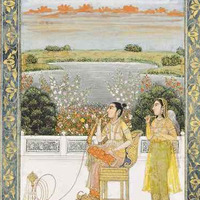Gulbadan Banu Begum
Item
Author
Gulbadan Banu Begum
Location
Kabul, Afghanistan
Dates
1523-1603 or 1608
Biography
Gulbadan Banu Begum was born to the first Mughal Emperor Babur and his wife Dildar Begum. On being commissioned by her nephew Emperor Akbar, she wrote her memoir Ahval-i-Humayun Badshah, which encompasses her account of the lives of her father Babur and her stepbrother Humayun. She writes primarily in Persian, with a sporadic use of Turki (Lal 594).The memoir moves away from the genre of writing histories and biographies that focuses primarily on events of ‘political significance’ such as wars and annexations, as well as accounts of State structures, to record everyday incidents and circumstances. A striking feature for which the memoir has been acclaimed is its representation of the Mughal harem—it focuses on the harem as a space of material relationships and hierarchies between women rather than portraying it as a “feminine, sexualised, secluded domain,” as has been done by contemporary male historians (Lal 602). Her memoir is the only surviving history written by a woman in 16th century Mughal India (Malhotra).
Works
Ahval-i-Humayun Badshah i.e. Ahval of Emperor Humayun
Genres
Ahval
Bibliography
Aftab, Tahera. Inscribing South Asian Muslim Women: An Annotated Bibliography and Research Guide, Brill, 30 November 2007, https://doi.org/10.1163/ej.9789004158498.i-616; Lal, Ruby. “Historicising the Harem: The Challenge of a Princess’ Memoir.” Feminist Studies, Vol. 30, No. 3 (2004), pp. 590-616; Malhotra, Shrishti. “Gulbadan Banu Begum: The Mughal Historian We Don’t Know Of.” Feminism in India, 25 Jan. 2018, https://feminisminindia.com/2018/01/25/gulbadan-banu-begum-womens-history/; Murshed, Yasmeen. “The Humayun Nama: Gulbadan Begum’s Forgotten Chronicle.” The Daily Star 5, 32 (June 27, 2004), http://archive.thedailystar.net/2004/06/27/d406271502101.htm;
